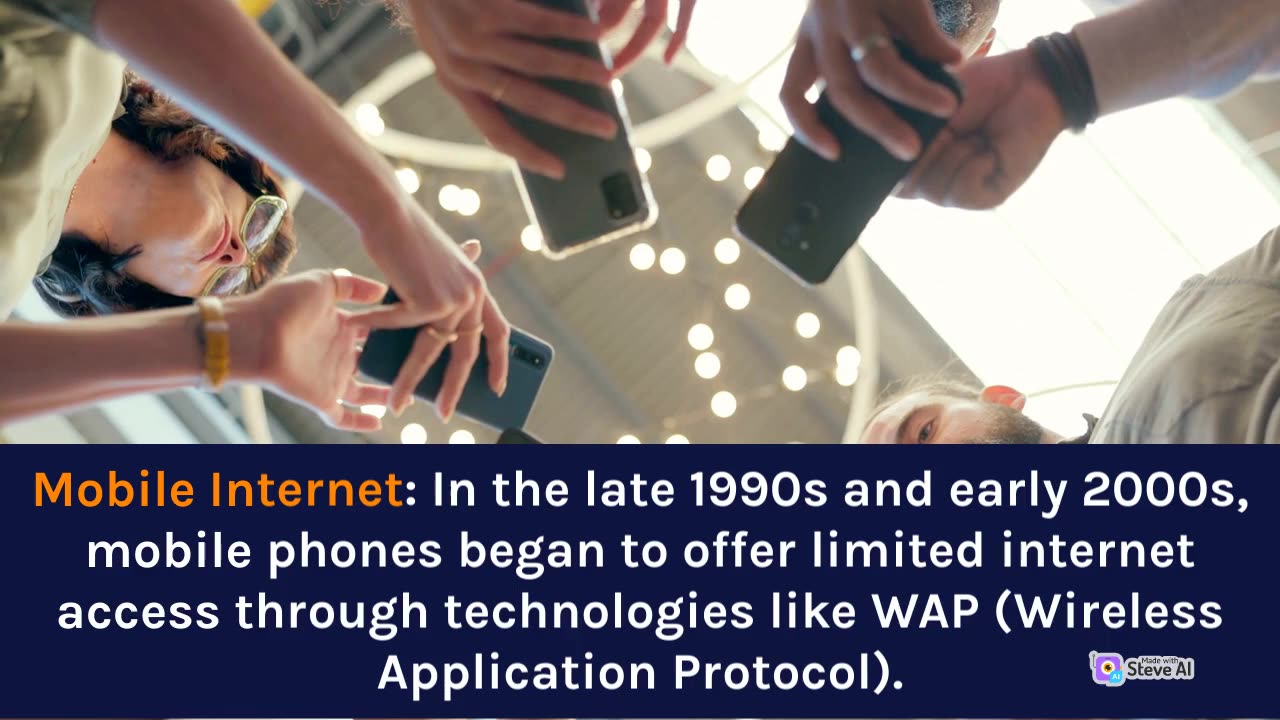Premium Only Content

Mobile Phone History
The history of mobile phones is a fascinating journey that spans several decades and involves numerous technological advancements. Here's a brief overview of the key milestones in the evolution of mobile phones:
Early Concept and Development:
The concept of mobile communication can be traced back to the mid-20th century. In 1947, engineers William Rae Young and Douglas H. Ring proposed the idea of cellular networks, where geographical areas would be divided into cells, each with its own low-power transmitter and receiver. However, it wasn't until the 1970s that significant progress was made.
First Mobile Phone Call:
On April 3, 1973, Martin Cooper, a Motorola researcher, made the first public mobile phone call using a prototype of the DynaTAC phone. The call was made to a rival Bell Labs researcher, Joel Engel, and took place in New York City. The DynaTAC weighed about 2.2 pounds and had a battery life of about 20 minutes.
Commercial Introduction:
In 1983, Motorola released the first commercially available mobile phone, the Motorola DynaTAC 8000X. This phone was bulky and expensive, but it laid the foundation for future developments in mobile technology.
Advancements in Mobile Technology:
Throughout the 1980s and 1990s, mobile phones became smaller, more affordable, and more popular. Various manufacturers entered the market with new models and features, such as Nokia's iconic 3210 and 3310 phones. The introduction of text messaging (SMS) in the 1990s further boosted the appeal of mobile phones.
Transition to Digital:
The second generation (2G) of mobile technology brought significant improvements, such as the transition from analog to digital communication. In the early 1990s, 2G networks were deployed, enabling better call quality and the possibility of sending/receiving data, like text messages.
Mobile Internet and Smartphones:
The late 1990s and early 2000s saw the emergence of mobile internet services. WAP (Wireless Application Protocol) allowed users to access limited online content on their mobile devices. In 2002, RIM (Research In Motion) released the BlackBerry, a device that revolutionized mobile communication by offering email services on the go.
The Rise of Smartphones:
In 2007, Apple introduced the iPhone, a touchscreen-based smartphone that redefined the mobile industry. The iPhone's user-friendly interface, large app ecosystem, and multimedia capabilities set a new standard for smartphones. Other companies, such as Samsung and Google, followed suit with their Android-based smartphones, leading to intense competition and rapid innovation.
3G, 4G, and Beyond:
The third generation (3G) of mobile networks brought faster internet speeds and improved multimedia capabilities. The fourth generation (4G) offered even higher data speeds, enabling smoother video streaming and better mobile gaming experiences. By the 2010s, smartphones became an essential part of everyday life for millions of people worldwide.
5G and Beyond:
The deployment of fifth-generation (5G) networks began in the late 2010s, promising even faster data speeds, reduced latency, and improved connectivity for the Internet of Things (IoT). 5G technology opened up possibilities for augmented reality (AR), virtual reality (VR), and advanced applications in various sectors like healthcare, transportation, and manufacturing.
Ongoing Advancements:
As of my last update in September 2021, mobile technology continues to evolve rapidly. Foldable smartphones, AI-powered features, advanced camera systems, and extended battery life are some of the recent trends. Additionally, the integration of 5G and advancements in artificial intelligence are likely to shape the future of mobile communication.
Overall, the history of mobile phones demonstrates how this technology has undergone tremendous changes, becoming an indispensable part of modern life and transforming the way people communicate, work, and access information.
-
 47:21
47:21
Stephen Gardner
4 hours ago🔥The DEEP STATE is still covering up this HUGE LIE!! Trump MUST release MORE!!
5.27K6 -
 2:36:13
2:36:13
TimcastIRL
2 hours agoTrump Announces 25% Tariff On ALL CARS, Canada Begins MASS LAYOFFS Over Tariffs | Timcast IRL
187K80 -
 LIVE
LIVE
Alex Zedra
1 hour agoLIVE! New Game | Lost Lullabies
543 watching -
 2:44:05
2:44:05
TheSaltyCracker
3 hours agoDeep State Set Up Trump ReeEEStream Stream 03-26-25
76.1K125 -
 31:34
31:34
Friday Beers
8 hours agoWe Drank 12 Beers and Solved the Case of 9 Dead Hikers
7.66K1 -
 18:11
18:11
Nick Shirley
3 hours ago $0.91 earnedAsking The Irish If They Will Vote for Conor McGregor 🇮🇪
7.78K21 -
 LIVE
LIVE
Illyes Jr Gaming
4 hours agoIt's Wednesday! Let's Hit 300 Followers TONIGHT!
154 watching -
 LIVE
LIVE
Joker Effect
1 hour agoIs our government safe?***Streamer News***DRAMA***RUMBLE GETTING LEVERAGE***GAMING
719 watching -
 14:55
14:55
T-SPLY
6 hours agoDemocrats Accused Of Not Calling Out Joe Bidens Security Disasters
8.32K5 -
 LIVE
LIVE
ZachTheRipper
1 hour agoWe Back With A Passion - 0/20 Subs - Interactive Streamer - #RumbleGaming
240 watching